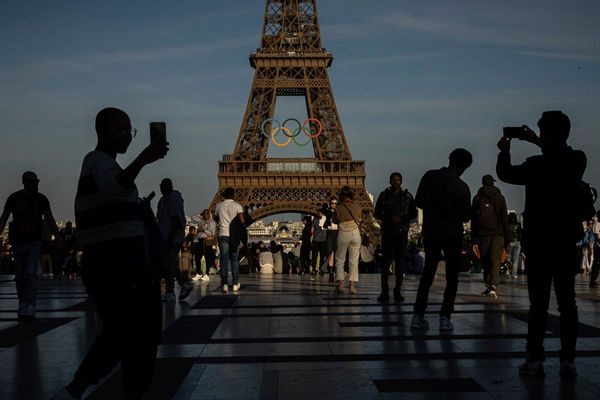
A rise in screen time during the pandemic has parents concerned about their children’s eyesight, but experts have said more focus is needed on other types of prevention.
Optometry Australia’s 2022 Vision Index survey, released last month, found that 64% of parents were concerned about the potential damage that spending more time looking at screens was doing to their children’s eyesight.
But less than half of respondents were aware that being outdoors plays a key role in protecting against shortsightedness, also known as myopia.
Shortsightedness is on the rise in children. The World Health Organization estimated that half of the global population may be myopic by 2050.
What are the risk factors for shortsightedness?
Myopia results from a combination of environmental and genetic factors. “It used to be thought of – even as little as 20 years ago – as being overwhelmingly genetic,” Prof Ian Morgan, of the Australian National University, said. “It’s now pretty clear that there are major environmental effects going on.” He said increases in myopia rates in east Asia over the last half century were too rapid to be explained by genetics.
Morgan’s research has found that children who spend more time outdoors are less likely to become myopic even if their parents are shortsighted, and regardless of how much time they spend on “near work” – activities done at short focal distance, like reading and writing.
The positive effect of outdoor time may be linked to specific properties of the radiant intensity of sunlight. Exposure to daylight is also thought to stimulate receptors in the eye to produce dopamine that protects against the development of shortsightedness.
Children who spend more time doing near work, focusing on books or screens, are at greater risk of becoming shortsighted. Other risk factors include increasing level of education and having two parents who are myopic.
“The prevalence of myopia was high in Taiwan and Singapore by the 1970s, when computer use was very limited, and smartphones were nonexistent,” Morgan said. “You don’t need these devices to create an epidemic. Since smartphones only took off about 10 to 15 years ago, we need to get more evidence that they are having an effect.”
What effect has the pandemic had on kids’ eyesight?
Research overseas has linked a decrease in outdoor time during the Covid-19 pandemic to a rise in shortsightedness in children.
A study of more than 120,000 primary school-age children in Feicheng, China found that the prevalence of myopia was 1.4 to three times higher in 2020, after months of home confinement, compared with the preceding five years.
Another study followed children in Hong Kong between January and August 2020. It estimated that the incidence of shortsightedness in a year was 26% to 28% for six- to eight-year-olds, in comparison to a pre-Covid group, which had a yearly rate of 15% to 17%.
The researchers found the changes coincided with a reduction in outdoor time from about one hour and 16 minutes a day to 24 minutes a day, and an increase in screen time from two and a half hours to seven hours daily.
A 2021 study in Turkish children who had already been diagnosed with shortsightedness found their myopia worsened more in 2020 compared with the two previous years. It also found that shortsightedness progressed more slowly in children who participated in outdoor activities for two hours a day, or lived in detached houses.
Can you prevent myopia?
Dr Angelica Ly, an optometrist and researcher at the University of New South Wales, said an important preventative measure in children is spending time outside. Ly said the general guideline is that children should be spending at least two hours a day outdoors. “It doesn’t need to be … in one hit, but it could incidental time walking to and from school, during recess, during lunch, etcetera.”
Optometry Australia said it was “vital that any problems are identified early” as myopia typically develops during childhood and treatment in the early stages can slow the condition’s progression.
For children already diagnosed as shortsighted, treatment options to slow the progression of myopia include specific eyedrops, contact lenses and myopia control glasses, Ly said.
What effect does screen time have on adults?
Optometry Australia found that 42% of surveyed Australians reported an increase in time spent looking at screens over the previous 12 months.
“There’s a little bit of evidence that occupations that require really intensive amounts of near work may tend to be more myopic,” Morgan said. “On the whole, the effects on adults seem to be pretty minimal.
“The rate of growth of the eye gets very close to zero after the age of about 25.”
• This article was amended on 4 August 2022 to update information provided about how long children should be spending outdoors; an earlier version quoted Dr Ly saying this was two and half hours - she has advised us that two hours was meant.







